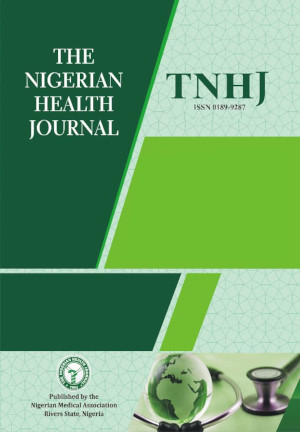Prevalence of Human Rhinovirus Infection in Children with Acute Respiratory Symptoms in Ilorin, Nigeria
Keywords:
Rhinovirus, ELISA, prevalence, risk factors, Human RhV-Ag, IlorinAbstract
Background: Human rhinoviruses are positive-strand RNA, non-enveloped virus detected mostly in the early phase of infection showing symptoms in children experiencing mild upper respiratory tract infections.
Method: In this study, 200 patients were screened for rhinovirus infection using Human Rhinovirus antigen (RhV-Ag) Elisa Kit (MBS269914).
Result: Demographic characteristics revealed that the prevalence of rhinovirus infection in children showed 38% positivity of which 20 (10.0%) were males while 17 (8.5%) were females. Children between the ages of 0-24 months have the highest prevalence of 45.9% while those older than 96 months have the least prevalence of 5.4%. No significant difference was observed between the genders and rhinovirus infection (p = 0.622). A total of 54.0%, 2.7%, 29.7% and 13.5% of the children attend daycare, creche, nursery and primary school respectively. A total of 140 (70%) in the urban recorded a positivity value of 11.0% and 59.0% negativity as against 60 (30%) who lived in the rural area with a value of 7.5%positivity and 22.5% negativity. Forty (20.0%) of the tested subjects had genotype AA out of which 6 (3.0%) was positive for rhinovirus infection, the remaining 34 (17.0%) were negative for the rhinovirus infection.
Conclusion: This study established the detection of rhinovirus infection in children attending the pediatrics clinic in Ilorin. This may become useful for diagnosing respiratory illness in high-risk populations with immune compromised individuals.
Downloads
Published
How to Cite
Issue
Section
License
Copyright (c) 2016 The Nigerian Health Journal

This work is licensed under a Creative Commons Attribution-NonCommercial-NoDerivatives 4.0 International License.
The Journal is owned, published and copyrighted by the Nigerian Medical Association, River state Branch. The copyright of papers published are vested in the journal and the publisher. In line with our open access policy and the Creative Commons Attribution License policy authors are allowed to share their work with an acknowledgement of the work's authorship and initial publication in this journal.
This is an open access journal which means that all content is freely available without charge to the user or his/her institution. Users are allowed to read, download, copy, distribute, print, search, or link to the full texts of the articles in this journal without asking prior permission from the publisher or the author.
The use of general descriptive names, trade names, trademarks, and so forth in this publication, even if not specifically identified, does not imply that these names are not protected by the relevant laws and regulations. While the advice and information in this journal are believed to be true and accurate on the date of its going to press, neither the authors, the editors, nor the publisher can accept any legal responsibility for any errors or omissions that may be made. The publisher makes no warranty, express or implied, with respect to the material contained herein.
TNHJ also supports open access archiving of articles published in the journal after three months of publication. Authors are permitted and encouraged to post their work online (e.g, in institutional repositories or on their website) within the stated period, as it can lead to productive exchanges, as well as earlier and greater citation of published work (See The Effect of Open Access). All requests for permission for open access archiving outside this period should be sent to the editor via email to editor@tnhjph.com.



